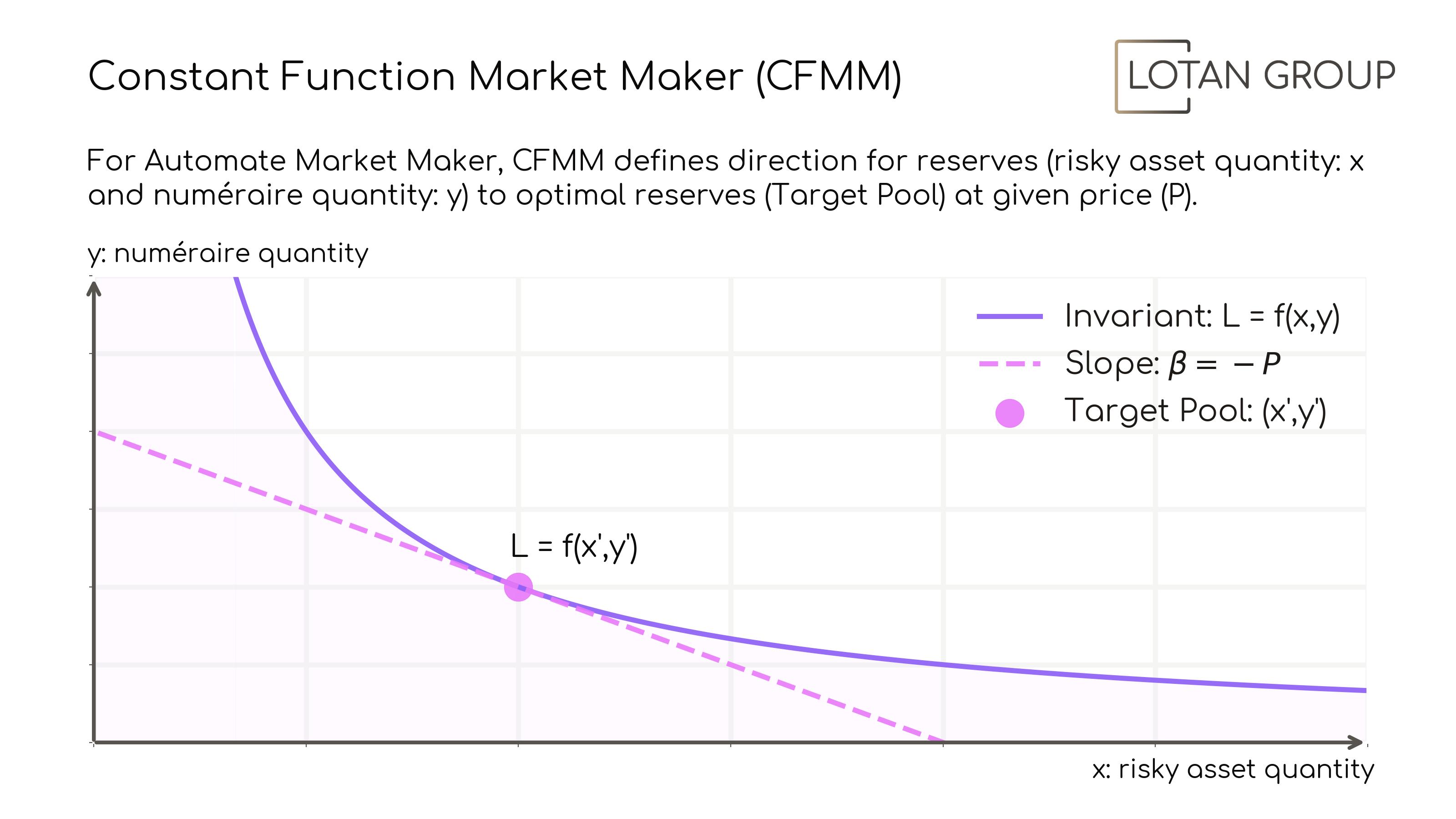Articles
Mathematics Behind Automated Market Makers
Mathematical foundation for more efficient DEX markets: liquid, fast & profitable
Automated Market Makers (AMMs) represent a foundational technology in decentralized finance (DeFi), allowing for asset trading without traditional market makers. Instead of using an order book, AMMs utilize mathematical formulas to determine the price of assets based on the supply and demand within a given liquidity pool.
AMMs transform DeFi trading by providing liquidity algorithmically. While they enhance accessibility and inclusivity, they also introduce challenges such as impermanent loss and arbitrage vulnerabilities. Despite these issues, the robust fundamentals of AMM offer possibilities to address these gaps. 😇
🏦 Terminology
Automated Market Making AMM
New alternative structure for electronic trading; they are blockchain wallets which can hold crypto assets, but whose behavior is determined fully by blockchain code
Limit Order Book LOB
Traditional structure in electronic trading based on trade orders
Centralized Exchange CEX
Supervised entity for placing market orders
Decentralized Exchange DEX
Trust-less exchange on smart contracts on blockchain
Liquidity Provider LP
Animator of the market reducing slippage cost
Loss-Versus-Rebalancing LVR
Costs incurred by AMM LPs due to triggered prices by informed arbitrageurs
Miner Extractable Value MEV
Arbitrage profits for AMM
Uniswap UNI
DEX operating on the Ethereum blockchain
Sushiswap SUSHI
Uniswap with SUSHI token
Arbitrageur
Market participant profiting on price discrepancies in markets without market risk
Market Risk
Losses in positions from market price movements
Liquidity
Price availability for transactions without significant price changes
Marginal Liquidity
Liquidity levels corresponding to AMM's demand curve
🍹 Strategy types
Rebalancing Strategy
Strategy trading at CEX prices and holds the same quantity as in AMM
Rebalancing Arbitrage
Strategy that profits from price adjustments in CEX and CFMM
Delta-Hedging
Strategy that offsets the market risk by shorting the rebalancing strategy
Sandwich Attack
Strategy that manipulates prices by placing Bids & Asks on both sides
Sniping
Strategy of exploiting momentarily favorable conditions in trading
😫 Cost types
Price Slippage
Cost between spot and strike prices (contributing to LVR)
Impermanent Loss
Cost of divergence between the AMM's price and the market price (similar to LVR)
Convexity Cost
Cost of predefined loss in trading function (due to curvature)
Predictable Loss
Cost of expected loss from trading, including convexity cost
Fees
Costs of transactions, including gas fees
Gas Fees
Costs of computing energy for transactions
📏 Equations and further definitions
🦚 Examples of CFMM

Company Number: 8992639286 | VAT-5UE: PL8992639286 | Registered: Poland, Wrocław 53-129 Sudecka Str. 114/10
© 2024 Lotan Group. By using our service, you accept our terms and conditions.